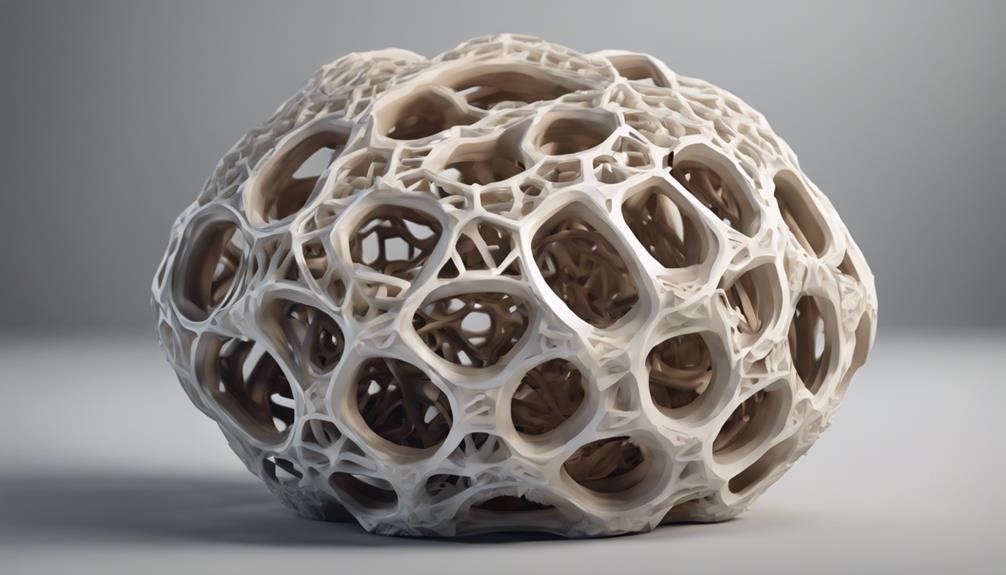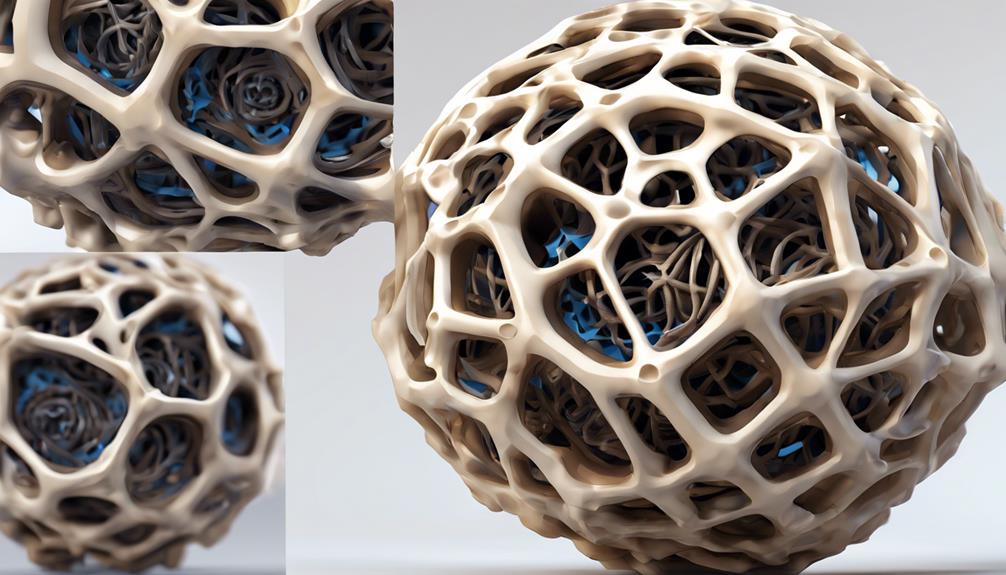The integration of Gyroid infills into 3D printing processes has sparked a significant shift in additive manufacturing methodologies. This intricate lattice structure's ability to enhance strength and optimize material usage has garnered attention across various industries. As manufacturers seek to streamline production processes and improve product performance, Gyroid infills emerge as a compelling solution. The implications of this innovation extend beyond mere efficiency gains, hinting at a transformative potential for the future of 3D printing.
Gyroid Infill: A Game Changer

Revolutionizing the landscape of 3D printing, Gyroid infill emerges as a transformative innovation with its unparalleled resistance and structural integrity. Introduced in 2017, Gyroid infill utilizes continuous curvilinear movements to provide isotropic structure and exceptional shear resistance.
This Triply Periodic Minimal Surface (TPMS) with cubic symmetry offers lightweight yet high resistance properties, making it ideal for applications requiring sheer strength. Not only does Gyroid infill save time, money, and filament consumption, but it also eliminates the need for perimeters during printing.
Its proven strength in all directions of forces sets it apart as a game-changer in the domain of 3D printing, opening up new possibilities for efficient and robust object production.
Unleashing Gyroid's Strengths
Revealing the inherent robustness of Gyroid infill, its structural integrity and resistance stand as proof of its engineering excellence in the domain of 3D printing. Gyroid infill demonstrates exceptional strength due to its continuous, interconnected structure, offering superior resistance to forces in all directions. This unique design feature makes Gyroid infill ideal for applications requiring high shear strength and structural integrity.
Its isotropic nature guarantees consistent performance regardless of the orientation of the printed object. By leveraging the properties of Gyroid infill, designers and manufacturers can create lightweight yet durable objects that excel in various industries, showcasing the unparalleled strength-to-weight ratio that Gyroid infill brings to the world of 3D printing.
Optimizing Gyroid for Efficiency

Activating the inherent efficiency potential of Gyroid infill involves strategic adjustments in 3D printing methodologies to maximize productivity and material utilization.
To streamline Gyroid for efficiency, it is essential to take into account infill percentage and print speed. Beginning with a lower infill percentage, around 5%, and adjusting as necessary can help find a balance between strength and material consumption. Gyroid's unique pattern offers high resistance even at lower infill percentages, making it a cost-effective option.
Furthermore, while Gyroid infill may slightly increase print speed, the overall time saved due to shorter printing durations contributes to improved efficiency. By fine-tuning slicer settings and leveraging Gyroid's structural properties, 3D printing workflows can be optimized for efficiency.
Gyroid in Creative Designs
Exploring the integration of Gyroid infills in innovative design concepts showcases the versatility and structural benefits this unique 3D printing pattern offers to various creative projects. Gyroid infills are ideal for designing aesthetically pleasing objects like vases, glasses, or pots without the need for perimeters.
The continuous lines along each layer reduce extrusion issues and allow for orientation-independent printing, minimizing filament consumption. This feature also enables the consideration of using more cost-effective materials without compromising strength. Gyroid infills are self-supporting, making them perfect for FDM manufacturing.
Creative examples such as the Gyroid Lamp and Gyroid Shelf Bracket highlight how this infill pattern enhances both aesthetics and structural integrity in various designs, demonstrating its potential for innovative applications in the 3D printing domain.
Gyroid: The Future of 3D Printing

The integration of Gyroid infills in 3D printing processes signifies a significant advancement towards enhancing structural integrity and efficiency in manufacturing applications. Gyroid infills offer a promising future for the 3D printing industry, with benefits such as:
- Improved structural strength due to continuous curvilinear movements.
- Enhanced efficiency in printing times and material consumption.
- Versatile applications in various designs and objects.
- Increased resistance in any direction, providing a reliable solution for manufacturing needs.
Frequently Asked Questions
Can Gyroid Infill Be Used for Objects Requiring High Flexibility?
Yes, gyroid infill can be used for objects requiring high flexibility. Its isotropic structure provides resistance in any direction, making it suitable for applications needing flexibility without compromising strength or sacrificing material efficiency.
How Does Gyroid Infill Affect the Overall Weight of Printed Objects?
Gyroid infill greatly impacts the weight of printed objects by providing a lightweight yet structurally robust internal framework. This innovative infill pattern optimizes strength-to-weight ratio, reducing overall weight while enhancing durability, making it ideal for various applications.
Are There Any Limitations to the Size of Objects Suitable for Gyroid Infill?
There are no specific limitations on the size of objects suitable for gyroid infill. Its isotropic structure and shear resistance make it adaptable for various sizes. Gyroid infill offers strength, reduces material consumption, and enhances aesthetics.
Does Gyroid Infill Impact the Post-Processing Requirements of Printed Objects?
Gyroid infill minimally impacts post-processing requirements of printed objects due to its isotropic structure and orientation independence. The continuous curvilinear movements reduce extrusion issues, requiring less post-processing, making it an efficient choice.
Can Gyroid Infill Be Combined With Other Infill Patterns for Specific Purposes?
Combining Gyroid infill with other patterns can enhance specific purposes. Gyroid's isotropic resistance complements infills like honeycomb for varied strength and flexibility. Experimentation with different combinations can optimize structural integrity and functionality in 3D printing.
Conclusion
To sum up, Gyroid infill has revolutionized the landscape of 3D printing with its unparalleled strength, efficiency, and versatility. This innovative infill pattern sets a new standard in structural integrity and filament usage, paving the way for a future of enhanced additive manufacturing capabilities.
Embracing Gyroid infill means embracing a revolution in 3D printing, where strength, efficiency, and creativity converge to push the boundaries of what is possible in the world of additive manufacturing.